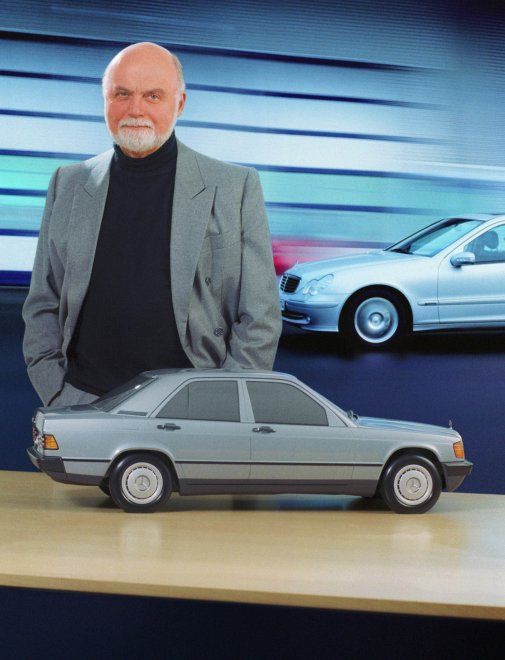Bruno Sacco: The Italian Who Was Mr Mercedes
Images: Courtesy Mercedes-Benz
For a quarter of a century, one man was the final word for the shape of Mercedes-Benz cars. Bruno Sacco, born on 12 November, 1933, was the Italian who headed Daimler-Benz design between 1975 and 1999, leaving his mark on the history of automotive design.
An engineering graduate, Sacco began at the Italian coachbuilding firms of Ghia and then Pininfarina, before moving to Germany and joining Daimler-Benz in 1958. Marriage to a German, Annemarie Ibe, and a family made him stay on.




Rising through the corporate ranks of Daimler-Benz, Sacco became head of design in 1975, taking over from Friedrich Geiger. For the next 25 years, until he retired in 1999, he was responsible for the design of every Mercedes car, bus and truck.

Among his noteworthy designs: the S-Classes of the 1980s and 1990s, especially the ground-breaking W126 series, the E-Classes, also from the 1980s and the 1990s, but more specifically the W124 (which is the model with which Mercedes-Benz India started off its assembly unit in Pune) the 1989 SL, the C-Classes since its launch as the 190 E in 1986, the first-generation M-Class (Mercedes-Benz’s first venture into the SUV segment) and a whole host of concept cars.

After Paul Bracq had taken Mercedes-Benz design into the route of subtle elegance with the vertically stacked headlamps as the trademark look for Mercedes during the 1960s, Friedrich Geiger redirected Mercedes-Benz design into the horizontally arrayed headlamp arrangement with a single item incorporating the main beams, parking lamps and the indicators.

Sacco took these givens and instilled a certain solidity into the design, a curved-from-one-block kind of look that brought in a Teutonic ‘heaviness’ into Mercedes design that appealed to the kind of buyer looking for the best of Germanic engineering and safety.

Not all of Sacco’s designs were that successful. The S-Class from 1991, the W140, took the German solidity bit too far, so much so that it was referred to as the ‘panzer wagon’. But with the next gen S-Class, Sacco rectified the heaviness and the over-engineering of the W140 with a design that was more appealing.

With the 1996 E-Class (the W210), Sacco moved further away from the Teutonic square-jawed look to designs that were trying to be more informal and ‘cool’.

Even more than the designs, the thinking and the theorizing that went behind the design philosophy of Mercedes-Benz (and which was copied by other car makers across the globe) were perhaps Sacco’s most important contribution.
Sacco’s product design strategizing based on what he called the ‘horizontal’ and the ‘vertical’ affinity in the Mercedes-Benz family, defined the sense of continuity and homogeneity of design seen even today.

Horizontal affinity is the common styling cue between different models in the Mercedes range that provides a strong visual relationship between various models.
Vertical affinity is the requirement for cars not to be rendered stylistically obsolete by their successors: the need for a certain timelessness of a design as Mercs tend to remain in circulation for two decades or more.


This was the hallmark of Mercedes-Benz design during the Sacco period.
Retired, Sacco divided his time between Germany and Italy, before his sad passing on 19 September 2024.
Comments
Sign in or become a deRivaz & Ives member to join the conversation.
Just enter your email below to get a log in link.
